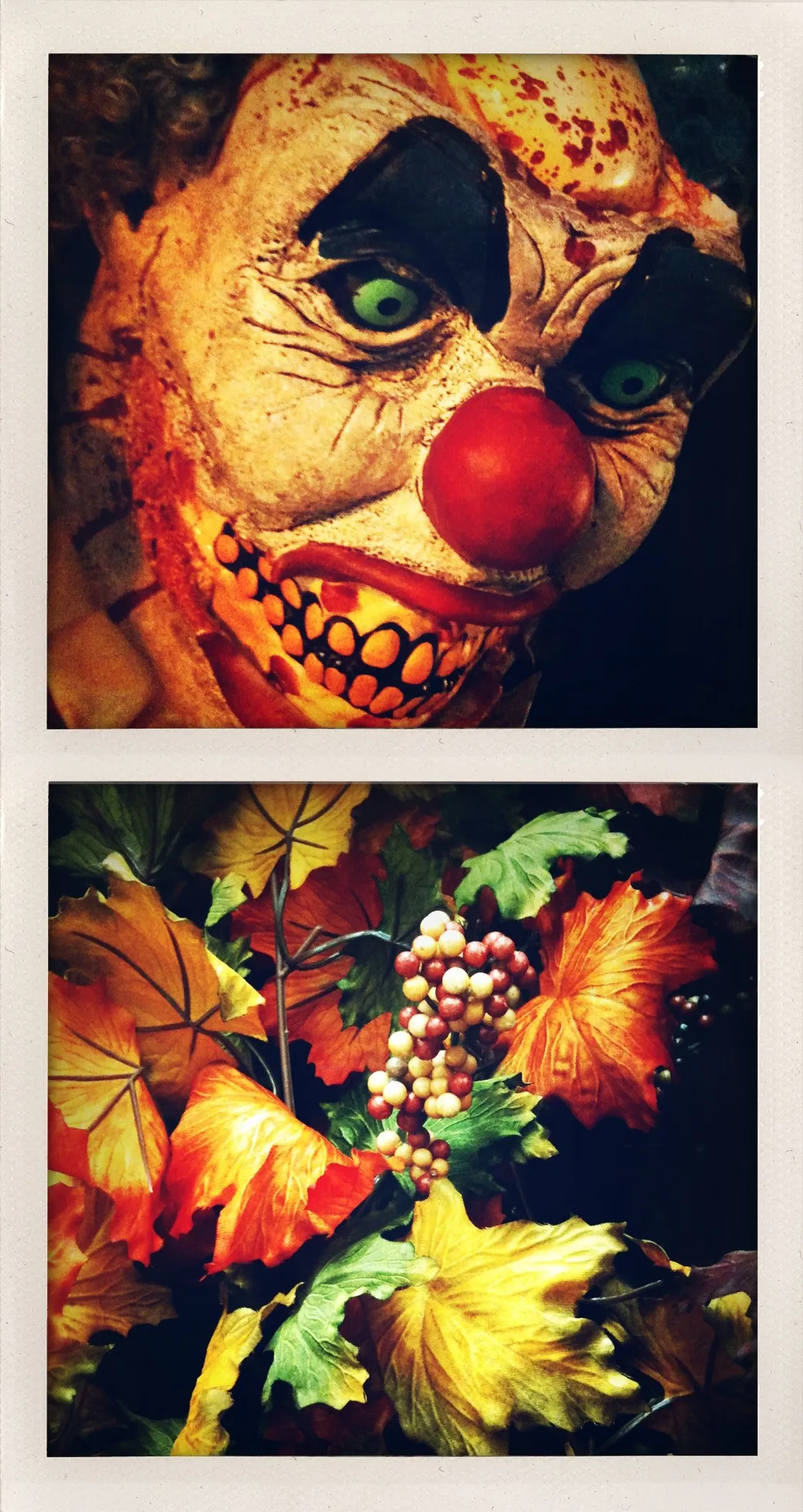The Grapes of Wrath

This diptych pairs two mass-produced seasonal decorations: a Halloween clown mask and artificial Thanksgiving foliage with plastic grapes. Both objects share an autumnal harvest palette—reds, golds, sickly greens—that visually unifies them while their content creates tension between menace and abundance.
The pairing reflects how these holidays collapse into each other in retail spaces, where Halloween horror and Thanksgiving harvest coexist on adjacent shelves. The clown looms above the grapes, his cracked latex face and wide eyes suggesting threat rather than festivity. Below, the synthetic harvest—glossy grapes, unnaturally saturated leaves—presents plenty without nourishment. Both are hollow commodifications of American holiday ritual, mass-produced spectacles emptied of their original meaning.
The title references Steinbeck’s novel, but here wrath exists in surplus rather than scarcity. The abundance itself becomes sinister—too bright, too dense, watched over by something grotesque.
Essay written: November 2025